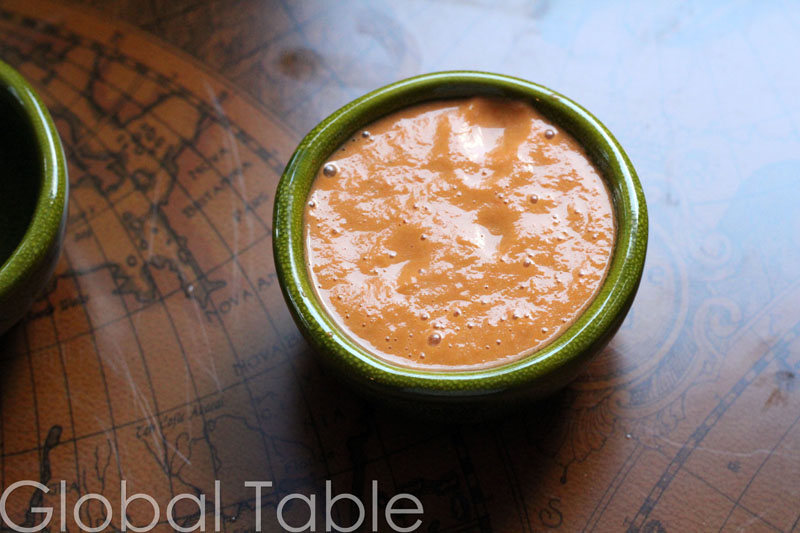
If you want to eat like a Bolivian, I highly recommend you try Llajua. Bolivians happily splash this liquid fire over their meals as casually as Americans use ketchup – perhaps even more profusely. The stuff goes on everything – from soup to grilled meat, boiled vegetables, savory pies (like the Salteña), and more. The heat originates from the locato pepper, rated between 30k and 100k on the Scoville Unit. From what I gather, the locoto is like a mild habanero. Ha. Mild. Habenero. What an oxymoron. If I know one thing, I know I can’t handle any kind of habenero with grace, mild or not. In fact, I about went into apocalyptic shock during the Angolan Global Table, when I threw part of a habenero down the garbage disposal and ran it. Yes, I meant apocalyptic. Death fumes shot right up into my eyes, nose, and throat, making even my toenails sweat. It was ugly. To spare myself (and you) the misery, I substituted Serrano chilies which rate below 25k Scoville Units. And, boy howdy. Good …
Read More
This is going to be a good week. We’re going to eat Bolivian and … are you ready for it??? … the evil kidney stone is gone!!! I’ll spare you the picture Keith put on his Facebook wall, not because it isn’t cool – it is – but mostly because the gross factor is 1 million – you would all run away and never come back. The simple fact that he shared his 5 mm monster with the world just goes to show he’s feeling better. Unfortunately, no sooner had I gotten my spunky husband back than he had to return to work. Bummer. I was getting used to seeing his pretty face all day. He’s a wonderful man and I thank him for all he does for our family. And, with that, I promise to never talk about kidney stones again. Unless he gets another one. Or I do. Ugg, my stomach just turned thinking about it. Without further ado, our Bolivian menu: Bolivian Avocado & Tomato Salad [Recipe] Fresh avocado halves filled with …
Read More

But let’s get back to the potato. According to Jose Sanchez, author of My Mother’s Bolivian Kitchen, there are over 1,200 kinds of Bolivian potatoes. With so many varieties, Bolivians are the number one consumer of potatoes in the world; they eat them about as many ways and in as many dishes as the Bahamians eat conch. For starters, they boil, bake, steam, fry, and freeze dry them. They like potatoes so much that they even put a few different ones together in a dish. For example, stews often include boiled and freeze-dried potatoes. Freeze-dried potatoes are called Chuno. Chuno takes at least five days of work to make and involves several freeze-thaw cycles and stomping the potatoes with clean, bare feet. The end product looks a lot like a rock and vaguely like a little like a shrunken head. I’ve read the shelf life is anywhere from 10 years to forever. Awesome! Originally part of the Inca empire, many Bolivian recipes are influenced by the indigenous Indian culture as well as the Spanish. Dried …
Read More
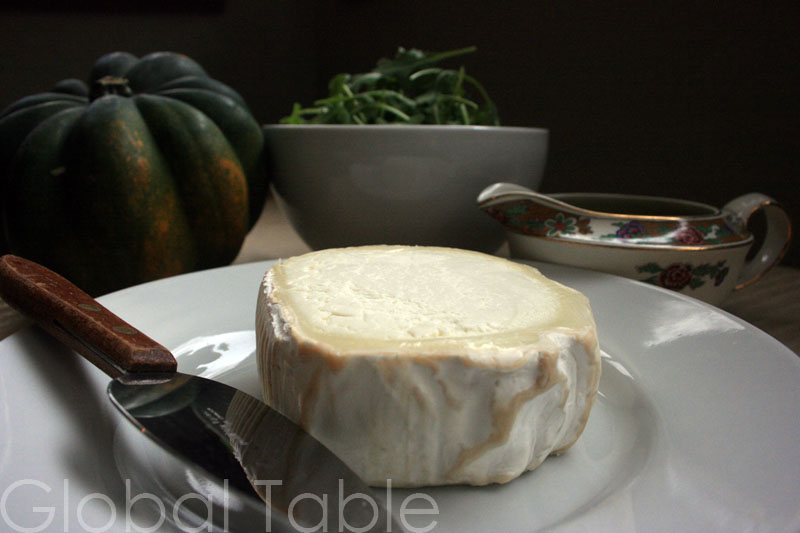
This is meal #7 in my personal challenge to eat one meal from every country in the world. This week I used my Great Aunt’s dishes for the first time. Her name was Caterina, but we called her Lulla Rina. Lulla Rina made two of my favorite childhood treats: spaghetti tossed with boiled potatoes and marinara, and braided challah with whole eggs baked inside. She’s been gone a long time now but I still smile when I think of those unusual treats. The day of our Argentine feast, I carefully unpacked the dishes. Many were missing or chipped, but I pulled out what I could and rinsed them under hot, soapy water. My fingers traced along the hundreds of harmless fractures that spidered across the old china, telltale signs of decades of use. She must have served thousands of meals on those beautiful dishes. I drank Yerba Mate tea from a teacup she’d once drank from and my heart was with her. Roasted Seasonal Pumpkin Salad with Arugula and Chevre [Recipe] What I like most about this dish: Imagine, if you will… aged goat cheese melts like butter into steaming roasted squash. Baby arugula …
Read More
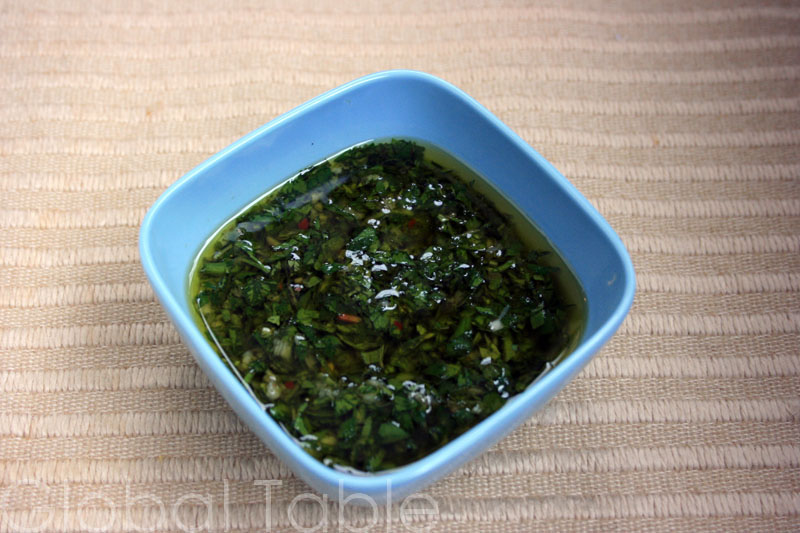
Serves 4 Chimichurri sauce is traditionally served with Beef Empanadas in Argentina. The bold garlic flavor also goes well with any grilled beef. Ingredients: 3/4 cup chopped fresh parsley 1/4 cup chopped fresh oregano 1/2 cup olive oil 1/4 cup chopped red onion 1/4 cup red wine vinegar 2 Tbsp water 5 garlic cloves, crushed 1 tsp salt 1/4 tsp red pepper flakes 1/4 tsp pepper Method: 1. Combine all ingredients in a food processor or blender. Process until a loose salsa consistency is achieved. 2. Let stand at room temperature for flavors to meld, at least 30 minutes. Chimichurri can be refrigerated for a day or two. Serve at room temperature. Chimichurri Sauce Votes: 1 Rating: 5 You: Rate this recipe! Print Recipe Chimichurri sauce is traditionally served with Beef Empanadas in Argentina. The bold garlic flavor also goes well with any grilled beef. CourseAppetizers & Snacks LifestyleGluten-Free, Potluck Friendly, Vegan, Vegetarian Food TypeSauces & Dressings Servings Prep Time 4 people 10 minutes Passive Time 30 minutes Servings Prep Time 4 people 10 minutes Passive Time 30 minutes …
Read More
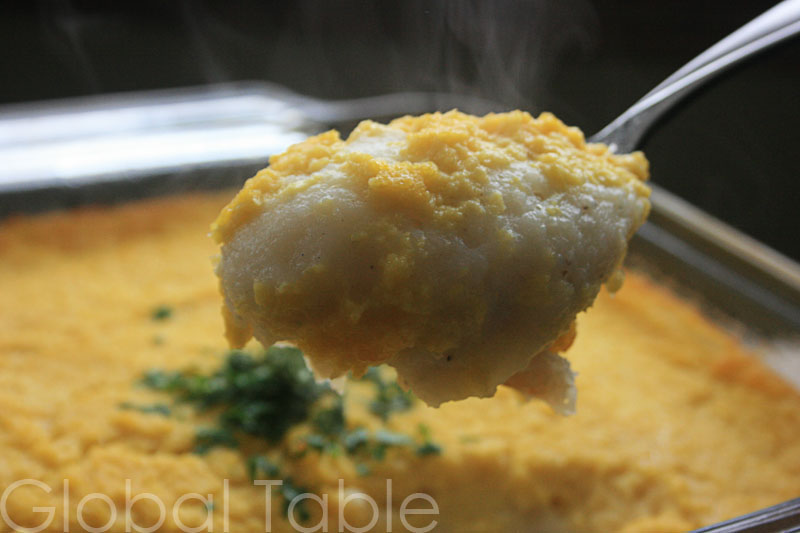
Makes one 8×8 casserole Even the pickiest eater will enjoy this simple casserole. What’s better than mashed potatoes and corn? NOTE: Recipe updated November 2011 to make it richer and more epic. Depending on the size of your potatoes, you may need more or less milk/butter. Ingredients: 5 russet potatoes (3 lbs), peeled and boiled 1- 1 1/2 cups whole milk (or as needed to make potatoes fluffy) 3/4 cup melted butter 2 tsp garlic salt pepper salt 2 cups frozen corn, thawed 2 Tbsp minced parsley Method: 1. Preheat oven to 425F. In the hot pot you cooked the potatoes, add the drained potatoes. Let steam dry a few minutes (this allows even more milky goodness to get into them). Then add 1/2 cup melted butter (reserve the rest for the corn topping), garlic powder, pepper, and salt. Mash together, adding milk in small amounts until fluffy. 2. Put potato mixture in a buttered casserole dish. 3. Puree thawed corn with remaining melted butter until creamy. If your blender has trouble, add a bit of milk …
Read More
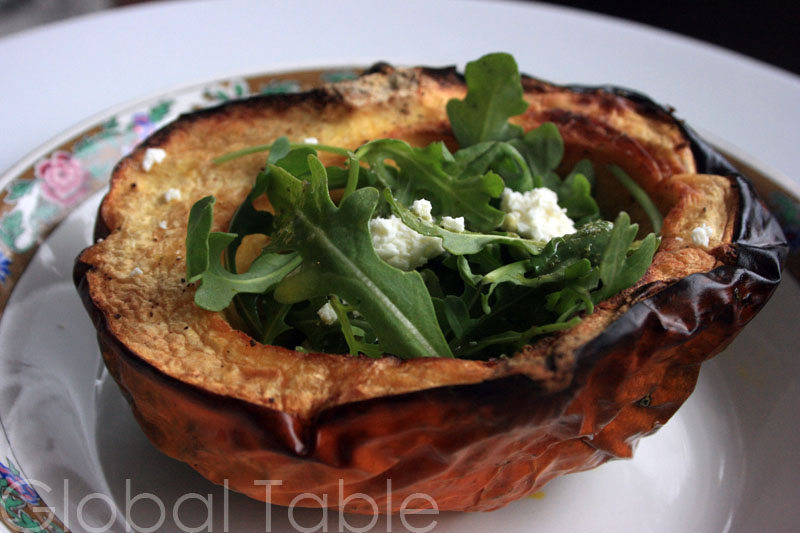
Serves 4 I first heard of making a salad inside a hot, roasted pumpkin from the Argentine chef, Francis Mallmann. My version of this unusual salad is streamlined for the home cook. Enjoy this wonderful comfort food on a cold day. Makes enough for a light meal, or use it as an impressive starter in a larger feast. Ingredients: 2 acorn squash (or pumpkin – whatever is in season) olive oil salt pepper For the vinaigrette: 1 1/2 Tbsp chopped fresh mint 1 1/2 Tbsp chopped fresh oregano 1/4 cup red wine vinegar 1/2 cup olive oil 1 tsp salt 1/2 tsp pepper bunch baby arugula 8 ounces Bucheron goat cheese (this is aged goat cheese – regular goat cheese is a fine substitute) Method: 1. Preheat the oven to 400F. 2. Cut pumpkins in half and remove seeds and strings. Brush cut ends liberally with olive oil and sprinkle with salt and pepper. 3. Roast for 45 min-1 hour, or until a fork pierces the flesh with no resistance. 4. Meanwhile, whisk together ingredients for the vinaigrette in a small bowl. …
Read More
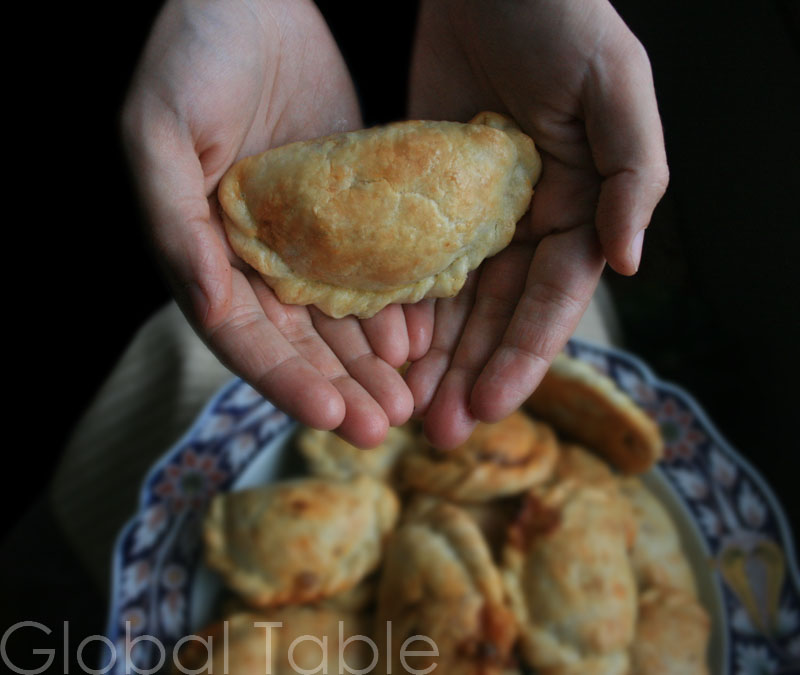
Serves 4-8 Spicy and hearty, beef empanadas are great party food. Serve with Chimichurri dipping sauce for a garlicky kick. Ingredients: 2 batches empanada dough For the Filling: 1 Tbsp butter 1 onion, minced 1 1/2 Tbsp tomato paste 3 cloves garlic, crushed 1/2 tsp dried oregano 1 tsp cumin 1/4 tsp cayenne 1/2 lb ground hamburger, 85% lean 3/4 cup low sodium beef broth 1/2 cup shredded Monterey Jack 1 hard-boiled egg, chopped 1-2 green onions chopped salt pepper Method: First, prepare the empanada dough. For the empanada filling: 1. Heat a large skillet over medium heat. Add butter and melt. Add onion and cook until softened and translucent. Add tomato paste, garlic, cumin, oregano, and cayenne. Stir thoroughly to combine and cook for about 2 minutes. 2. Add ground beef and cook until the seasonings mix in and meat is just cooked through. Add beef broth and simmer over low until most of the moisture evaporates and meat just looks wet. 3. Turn off heat. Stir in cheese, egg, and green onion. Cool filling …
Read More
Have you ever seen an Argentine Tango? Be prepared for a boost of energy! Speaking of energy – consider trying Yerba Mate Tea. This video will tell you all about it! (I found some at Whole Foods made by Traditional Medicinals):
Read More
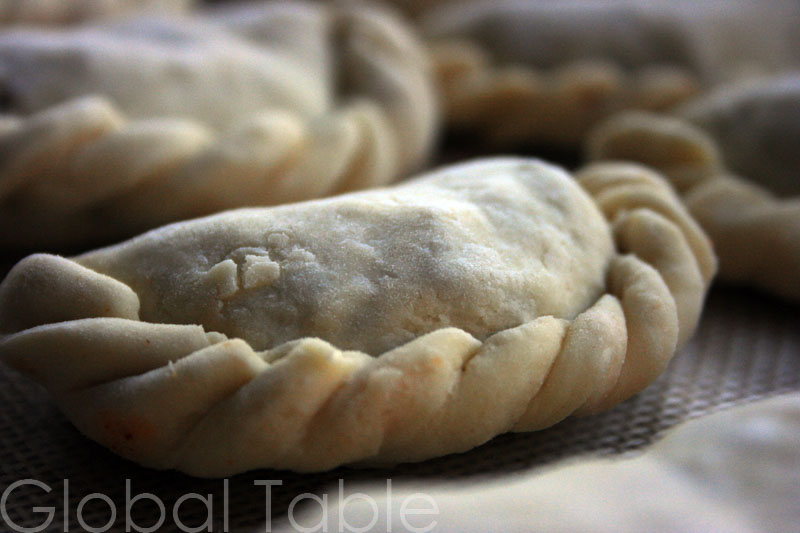
Uggg. Empanadas are hard to make. Well, to be specific, they’re hard to “repulgue.” Watching the videos in yesterday’s post made me think “Wow, this is going to be a breeze.” So naive. So VERY naive. The videos made it look easy breezy because those people had probably repulgued (can you say that?) thousands of empanadas. When you have made zero, repulging (probably can’t say that) is not easy at all. So, I hope you’ll cut me some slack when you see what I made for this weekend. At least I didn’t resort to the fork (although I thought about it). Although the empanadas look like the product of a kindergarten craft project, lots of love and effort went into their making. My friend and I spent the better part of the day making dough, cooking the filling, cooling the filling, filling the filling into the filling… huh? what? Sorry, I had some sangria in there somewhere, too. Now that you’ve been updated, let’s talk dulce de leche. Dulce de leche is made by cooking sweetened condensed milk for several hours until …
Read More
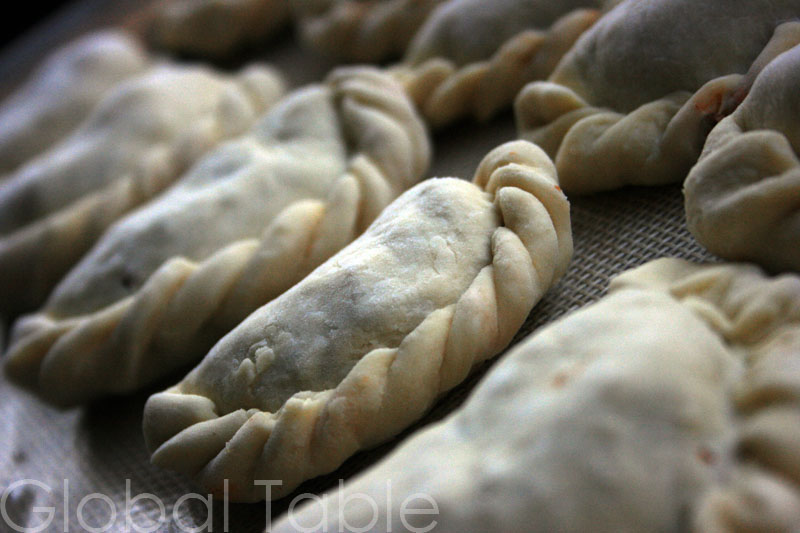
“You just might do it wrong,” said the little squeaky voice inside my head. I looked up from the Empanadas recipe and frowned. “I’ve made little filled pastries before.” I replied, “Just cut circles, fill with meat, fold in half, and seal the edges with a fork. Easy!” “There’s probably a proper way to make empanadas,” said the voice, a little louder. “You should find out, before you make a fool out of yourself.” The voice inside my head became louder still, chattering on until I admitted defeat. The voice was right – I needed to find out once and for all. Fast forward through several google searches and YouTube videos (seeing as my cookbook was no help in this area). Wouldn’t you know, there actually IS a proper way to shape empanadas and it does NOT include sealing the edges with a fork. The method is to “repulgue,” or roll the edges to make the appearance of a two strand braid. As fate would have it, an Argentinian blogger living in Paris just happened to blog about this very technique 12 days ago! Huzzah! …
Read More













